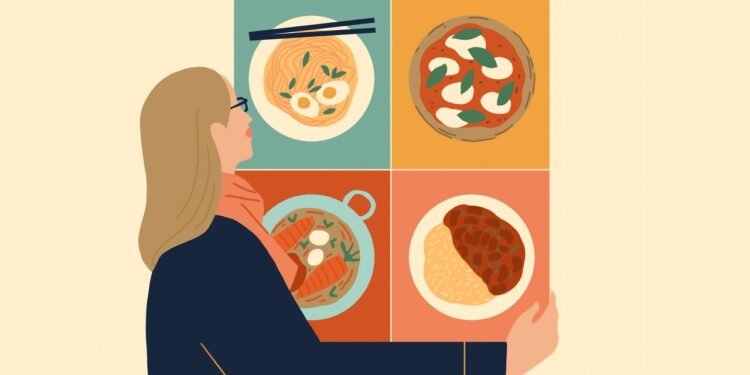And so, it just speaks to how, like, before these borders existed, before there was such a, you know, rigid, each country has its own space, [laughs] um, you know, there were just things that were being shared, or influences that sort of, um, bleed over these lines.
LA: So, if we are defining a national dish-
MS: [laughs]
LA: … by it being accessible, and by accessible, really, we mean cheap.
MS: Cheap or eaten every day-
LA: Eaten every day.
MS: … not a special occasion.
LA: And we’re gonna land on the hamburger.
MS: Yo. [laughs]
LA: And then, you know, listeners-
MS: I can’t believe I’m saying it. [laughs]
LA: … please get in the comments, get in the reviews, tell us how we’re wrong, get angry. Um-
MS: I’m all right with being wrong. I- really, I swear, I did, I challenged myself to think outside of the hot dog and the hamburger, but I kept coming back to it.
LA: After the break, a fascinating celebration that takes place when Anya visits Oaxaca, as well as her take on Japan’s national dish.
Another food capital I’ve got to experience myself, albeit, for only three days, and therefore felt absolutely intimidated, just in terms of where to start, is Tokyo, um, and you mentioned ramen, and one of the things, actually, really struck me was that ramen, at least when I was there for my sort of snapshot, was that it was often like a late-night drunk food that a lot- a lot of people were sort of shoveling into their mouths at the end of a night, um, which I was so surprised by, because that’s just not how ramen is being served in New York or- or London, or any other places that I’ve kind of got to actually know it.
AB:: Yeah, it’s very funny. The original ramen was a Chinese dish, and then it became street food dispensed from carts called yatai, that had, like, a signature flute, talking about sounds, um, yeah, and you scarfed it down drunk late at night after a party. And then came the sort of brick and mortar ramen, yeah, and it was also something very democratic. Well, then in the ’90s, it became something gourmet, and therein, I note the parallels with pizza. It’s kind of the same story. You have this, you know, slightly scorned, you know, poor man’s food, and then it becomes this gourmet item, right? And then, it’s exported to New York and London and re- it’s, you know, re-imported back with this new status of, like, this indie icon of, uh, of indie chefs. There’s this, um, Abram Plaut, this, uh, American ramen expert that became so famous in Japan because he ate so much ramen, uh, that he had a column, I think, in- in Japanese Playboy, and he’s on TV [inaudible 00:19:35] on- on ramen.














